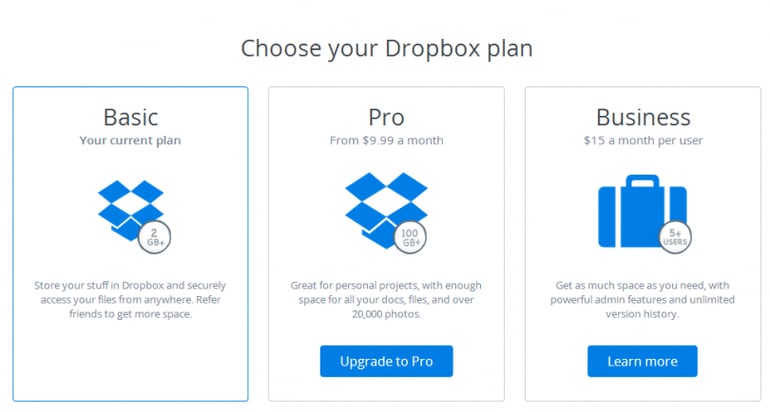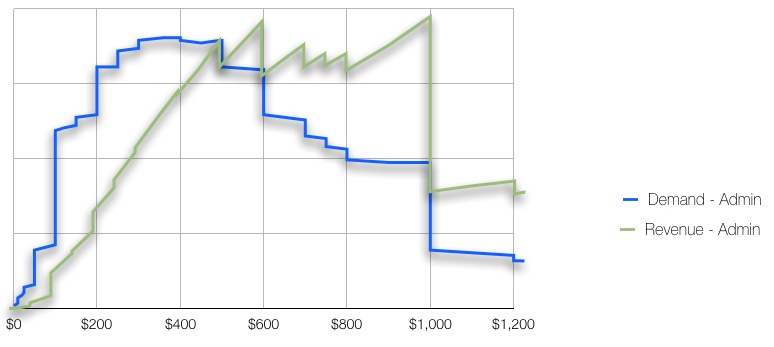Freemium Pricing: How to Hook and Monetize Your Customers
 PriceBeam
·
4 minute read
PriceBeam
·
4 minute read
Spotify, LinkedIn, Evernote, Skype, MailChimp. Five companies employing a freemium pricing strategy that I can mention from the top of my head. And the list goes on. HubSpot, Dropbox, SurveyMonkey. Some of the most successful firms in the world use this strategy, and for good reason: when MailChimp created a freemium model, sales increased by 150% and profits increased by 650% only one year after the model was in place. And soon, other firms (HubSpot, for example) would follow suit. After all, who can say no to such improvements?
Definition: Freemium pricing (“free” and “premium” put together) is a business model where firms offer a basic version of their product or service completely free of charge, while charging an add-on fee for features and functionality that are deemed to be “premium”.
Why Freemium Pricing is Awesome
The wonderful thing about this strategy is that you get to show your product to a lot of people. With freemium, prospective customers can try your product completely risk-free. If they don’t like it, there’s no harm done, so they might as well. And since your product is awesome, they will become hooked -- and perhaps even tell their friends about it. And once they’re hooked, they’ll be much more likely to go for those premium features.
Spotify, for example, knows that many people will find their premium fee obscene. Music-streaming is still relatively new to some, and paying $10 when you may as well go on YouTube, burn a CD, or just not listen to music, can seem a bit steep. Of course, once you try Spotify (even the free version) you’ll be hooked for life -- listening to music on YouTube and burning CDs are things of the past, and if it hadn’t been for Spotify’s free version, you would never have opened the door to this universe of music streaming.
Sure, you may be happy to stick with the free version, but the point remains that you are far more likely to opt for the premium version now that you’re a user.
And you go tell your friends about it. The free version is amazing, they may as well get it themselves: what do they have to lose? And you’re a great friend for tipping them about this service. Which leads us to another essential component of this strategy: word-of-mouth marketing. Free stuff will attract a lot of users, and inevitably bring you much more attention, whether that is on blogs, review sites, or around the dinner table. For instance, a Google search for MailChimp (freemium) returns 10 million results, whereas its competitor Aweber (premium-only) returns under 1 million.
Why Freemium Pricing Sucks
Giving out free stuff comes at a cost, one way or the other. While freemium pricing is often applied to products and services that cost little or nothing to produce (i.e. the variable cost of a piece of software is small after it has been developed initially), you may see customers sticking to the free version, while they would have paid for the premium one if the free version wasn’t available. Foregone premium sales is a cost, and should be considered when managing the trade-off between offering an attractive free version and incentivizing upgrades.
Moreover, as the free version will, indeed, be a basic version, some customers may fail to see what an awesome product they will get by upgrading. For instance, Spotify was forced to introduce ’30 minutes ad-free music’ because the ads (which you can get rid of by buying a premium subscription) annoyed people so much that they would stop using Spotify altogether.
When buying a ‘freemium’ product, the first thing customers will see is the free version: and if this is horrifically bad, they will be even less inclined to try the premium version.
Nailing the Freemium Business Model
Above, we have outlined to pros and cons, or the two sides of the coin, if you will. When employing a freemium model, there are several trade-offs that you need to consider and manage. On the one hand, you want to offer a free version that will get you a huge user base, which you can then convert into premium users. But on the other hand, you don’t want your free version to be so good that no one will buy the premium version. So what do you do?
We can’t give you one straight answer as this will differ between businesses, but in the majority of cases we see that the free version is too good. In their relentless hunt for more customers, happy customers, firms forget to focus on what really matters and monetize. And who can blame them? Customers love you, send you loads of positive feedback, speak fondly about you wherever they go. But, put bluntly, the reason they love you is that you’re a charity. If you start giving out free burgers on the street, customers will love you, but that doesn’t mean you have the best burger in town -- quite the opposite, in fact. So key #1: keep your eyes on the target, and create the free version with one eye on the bottom-line.
Moreover, to ‘justify’ the flaws in the free version, it’s important to remind free users that these flaws are directly attributed to the fact that they’re not paying: Spotify often reminds free users that higher quality, ad-free music is available with a premium subscription; Online dating sites tell their users that they need to pay to get more messages; and LinkedIn politely reminds users that much more recruiters would get in touch if you’d just get that premium subscription.
Secondly, you want to reap the rewards from all that word-of-mouth marketing you’re getting (and paying for, remember that!). It’s human nature that we want to recommend products and services to people that we know: it makes us look knowledgeable, and somewhat superior, to the recommended, so the more recommendations we can give out, the merrier. Therefore, make sure to make this process really easy for your users, and make a system where users can pursue their desire to recommend in a very delicate way. Furthermore, it is important that you keep an eye on what the opinion leaders are saying so that you can use their feedback to adjust your product so that it will get (mostly) positive word-of-mouth marketing.
.png?width=400&height=100&name=PBLogoTransparent%20(1).png)





